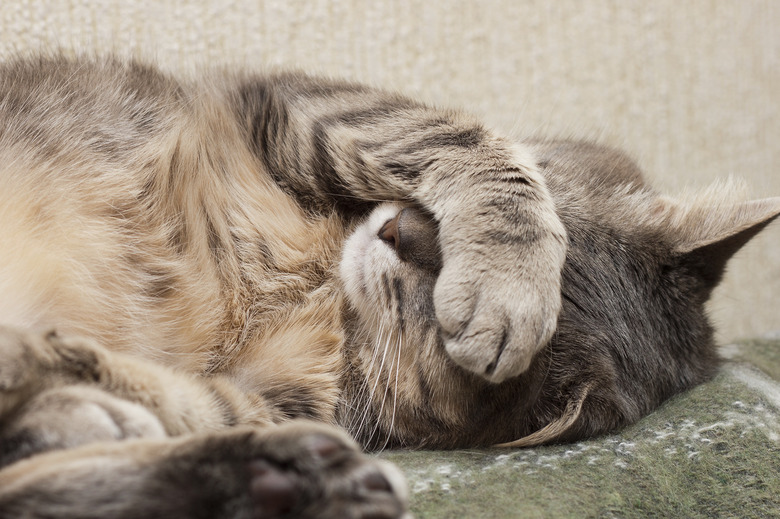How To Read Your Cat's Tail Movements
Your cat may seem like a mysterious creature who one minute is pleased with your affection, and then suddenly is not. It is best to understand the tail movements of your feline friend to know what he is feeling, and act accordingly. He may be insecure, or need extra attention to alleviate his fears. Your cat's tail contains caudal vertebrae that are moved into many positions by the sarcocaudalis muscle to convey his mood.
I am Overstimulated
I am Overstimulated
Most cats love to be petted and stroked behind the ears and at the base of the tail. He may arch his back as you stroke to display pleasure. According to Veterinary Partner, a cat can become overstimulated with too much petting. His tail will twitch side to side in a jerky manner to show his displeasure. It is best to stop petting him at this display of tail movements to avoid being scratched or bitten.
I am Angry
I am Angry
An extremely angry cat has a pose that is easily recognized. He will flatten his ears against his head, narrow his eyes and switch his tail. An arched back, stiffened body with hairs standing on end and a rapidly, lashing tail, show he is ready to attack. At this point, no matter what your cat's target, whether it is another feline or any other object, do not try to touch him as you likely will be on the wrong end of his claws or teeth.
I am Affectionate
I am Affectionate
When your cat shows affection, he will arch his back, hold his tail straight up and stiffen it. He may rub against you, with ears upright, purr and rub his head against people or other pets. When he is showing fondness, you will hear him emit a sweet purring sound and he may wrap his tail around your arm or leg as if in a caress.
I am Insecure
I am Insecure
When your cat holds his tail tucked between his legs or body, he is feeling insecure or anxious. He may be assessing a new item brought into the home, or a new person in his house. Gently petting him behind the ears can put him at ease so that he knows his best pal is there to protect him and he is not in a dangerous situation.
